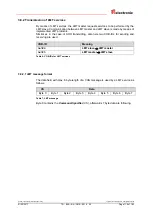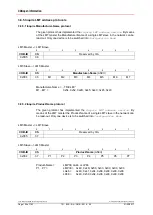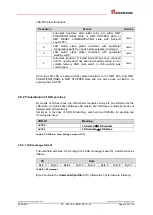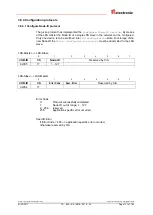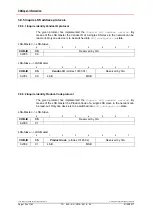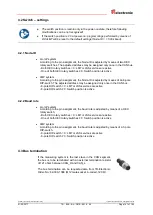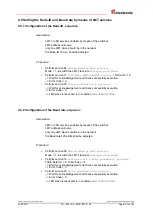
Printed in the Federal Republic of Germany
TR-Electronic GmbH 2010, All Rights Reserved
01/20/2017
TR - ELA - BA - DGB - 0016 - 04
Page 129 of 183
LSS FSA state transitions
Transition
Events
Actions
1
Automatic transition after initial entry into either NMT
PREOPERATIONAL state, or NMT STOPPED state, or
NMT RESET COMMUNICATION state with Node-ID
equals FFh.
none
2
LSS switch state global command with parameter
'configuration switch' or 'switch state selective' command.
none
3
LSS switch state global command with parameter
'waiting switch'.
none
4
Automatic transition if invalid Node-ID has been changed
and the new Node-ID has been successfully stored in non-
volatile memory AND state switch to LSS waiting was
commanded.
none
Once the LSS FSA is entered further state transitions in the NMT FSA from NMT
PRE-OPERATIONAL to NMT STOPPED state and vice versa does not lead to re-
entering the LSS FSA.
3.9.2 Transmission of LSS services
By means of LSS services, the LSS master requests services to be performed by the
LSS slave. Communication between LSS master and LSS slave is made by means of
implemented LSS protocols.
Similar as in the case of SDO transmitting, also here two COB-IDs for sending and
receiving are used:
COB-ID
Meaning
0x7E4
LSS slave
LSS master
0x7E5
LSS master
LSS slave
Table 8: COB-IDs for Layer Setting Services (LSS)
3.9.2.1 LSS message format
The data field with max. 8 byte length of a CAN message is used by a LSS service as
follows:
CS
Data
Byte 0
Byte 1
Byte 2
Byte 3
Byte 4
Byte 5
Byte 6
Byte 7
Table 9: LSS message
Byte 0 contains the
Command-Specifier
(CS), afterwards 7 byte data are following.





